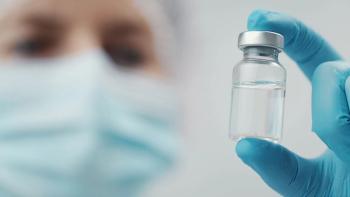
PTSM: Pharmaceutical Technology Sourcing and Management
- PTSM: Pharmaceutical Technology Sourcing and Management-06-07-2016
- Volume 11
- Issue 6
Best Practice: Testing Softgel Capsules
Texture analyzers can be used to evaluate wall hardness and elasticity of softgel capsules.
Softgel capsules are widely used in medicines, as well as vitamin and mineral supplements. The active ingredients are packaged inside a capsule or microcapsule to provide protection from the surrounding environment. At an appropriate time after the consumer places the capsule into their mouth, the ingredients are released by rupture, dissolution, melting, or diffusion. The rate at which these processes occur largely depends on the strength of the capsule wall.
Texture analyzers are used to test materials in compression or tension. The strength of the capsule wall is quantified using the texture analyzer in a penetration test with a 2-mm-diameter cylinder probe (shown in Figure 1) and a 4.5-kg load cell. This method determines the film strength (i.e., rupture point) of the softgel capsule. This same method is also used to detect points of weakness in a gelatine film or seal during the manufacturing process, simulating circumstances whereby a capsule might burst during packaging and transport.
The texture analyzer can also quantify the elasticity of the softgel capsule shell by measuring the deformation of the wall at a defined compressive load. Seal strength can be determined using a compression probe with a diameter larger than the capsule diameter (e.g., a 36-mm cylinder probe). The seal is positioned perpendicular to the probe and the force to break the seal is measured.
Test settings
When optimizing test settings, the hardest sample is tested first to predict the maximum force range that will be required. This ensures that the load cell selected for the texture analyzer has sufficient measurement range to test all capsules. Typical settings for a compression test are a probe speed of 1.0 mm/s, a target distance of 8 mm, and a trigger force of 10 g; this is the threshold force that the probe detects before the texture analyzer begins to record test data.
Figure 2 is a typical graph from a compression test, which can be used to calculate the rupture force and elasticity of a softgel capsule. In Figure 2, the probe penetrates the sample to a deformation distance of 8 mm. The energy required to deform the sample to this defined deformation distance, as measured by the instrument, is the “work done hardness.” If the capsule cracks or splits open during the test, the measured force will suddenly drop off. The peak load equates with the rupture force required to break the capsule wall and indicates the capsule wall’s hardness. Harder samples will give a higher peak load and a higher work done hardness.
The elasticity of the capsule can be quantified by measuring the deformation distance at hardness (i.e., at the peak load). Elastic samples will have a higher deformation distance compared to brittle samples.
Multiple samples can be tested on the texture analyzer, and the software used with the instrument can calculate average values with standard deviations. These statistical data enable the quality assurance group to set control limits for acceptable product coming from manufacturing. As an example, test data obtained from 10 softgel capsules of the same batch are shown in Table I.
Mean peak load
"Hardness"
(+/- SD)
(g)
Mean work done
Hardness 1
(+/- SD)
(mJ)
About the Authors
Chris Freeman,
Articles in this issue
over 9 years ago
Slow Serialization Efforts May Delay Business Benefitsover 9 years ago
Scientific Approach Ensures Accurate Weighing Resultsover 9 years ago
Ensuring Biologic API Uniformityover 9 years ago
Biomanufacturing Outsourcing Budgets Grow, Slowlyover 9 years ago
Novasep Starts Kilogram-Scale Batch Production at US Facilityover 9 years ago
FUJIFILM Opens New Laboratory in North Carolinaover 9 years ago
Catalent Opens Korean Sales Officeover 9 years ago
Juniper Pharma Services Expands Topicals Capacityover 9 years ago
ED-XRF Spectrometers Offer Rapid Elemental Analysisover 9 years ago
Raman Microscope Measures Uneven SurfacesNewsletter
Get the essential updates shaping the future of pharma manufacturing and compliance—subscribe today to Pharmaceutical Technology and never miss a breakthrough.





